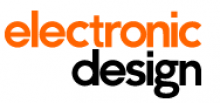
The critical role of standards in today’s environment is often overlooked, because their inherent nature is to make sure you don’t notice it working. Imagine going on a job interview in a world without standards. If you were to ask someone for directions to your interview, they might tell you it’s 500 steps away, but they have a longer stride so you ended up having to walk 1000 steps and you were late. You take out your laptop to give your presentation, which is riddled with various ports and jacks to connect to the internet so that no matter what the room has for connections, you should be able to make something work, and you realize your battery is low on power. You take out your outlet converter because you never know what form factor of plug is in the room or at what voltage. You then open the application to show your presentation, but remember this operating system doesn’t work with that program, so you boot up the other one that you think should work.
Luckily we don’t have to try and survive in that world, thanks to standards. Standard bodies like 802.3 are developed and maintained by independent organizations comprised of many companies who have a stake in the industry. Roadblocks are often averted by first proving that a prospective technology has market potential and technical feasibility. However, forecasts are not always correct.
Differing manufacturer implementations can also slow down the standards process. If a group can prove that a project does have the broad market potential, compatibility, a distinct identity, technical feasibility, and economic feasibility, and makes its way through the stages of the standardization process, the biggest roadblock is still to come. Having a perfect standard that fixes every issue is only good if it’s implemented, and one specific project that comes to mind is Auto-Negotiation.
Very important to the Ethernet architecture and technology as a whole, Auto-Negotiation is an algorithm defined in IEEE 802.3u to ensure Fast Ethernet worked with Ethernet. When Gigabit Ethernet was introduced, the Auto-Negotiation protocol was enhanced to make sure devices resolved to the highest priority technology type. The Auto-Negotiation process was cleverly designed to take advantage of the signaling available in the lowest common denominator technology, allowing future development to be backwards-compatible while still advancing.
The actual procedure was designed to be extremely simple in that this handshaking algorithm relies on both devices advertising what technologies they support simply by setting particular bits. Each of which indicate a technology in a defined word length, then a highest common denominator approach is used to begin link signaling.
